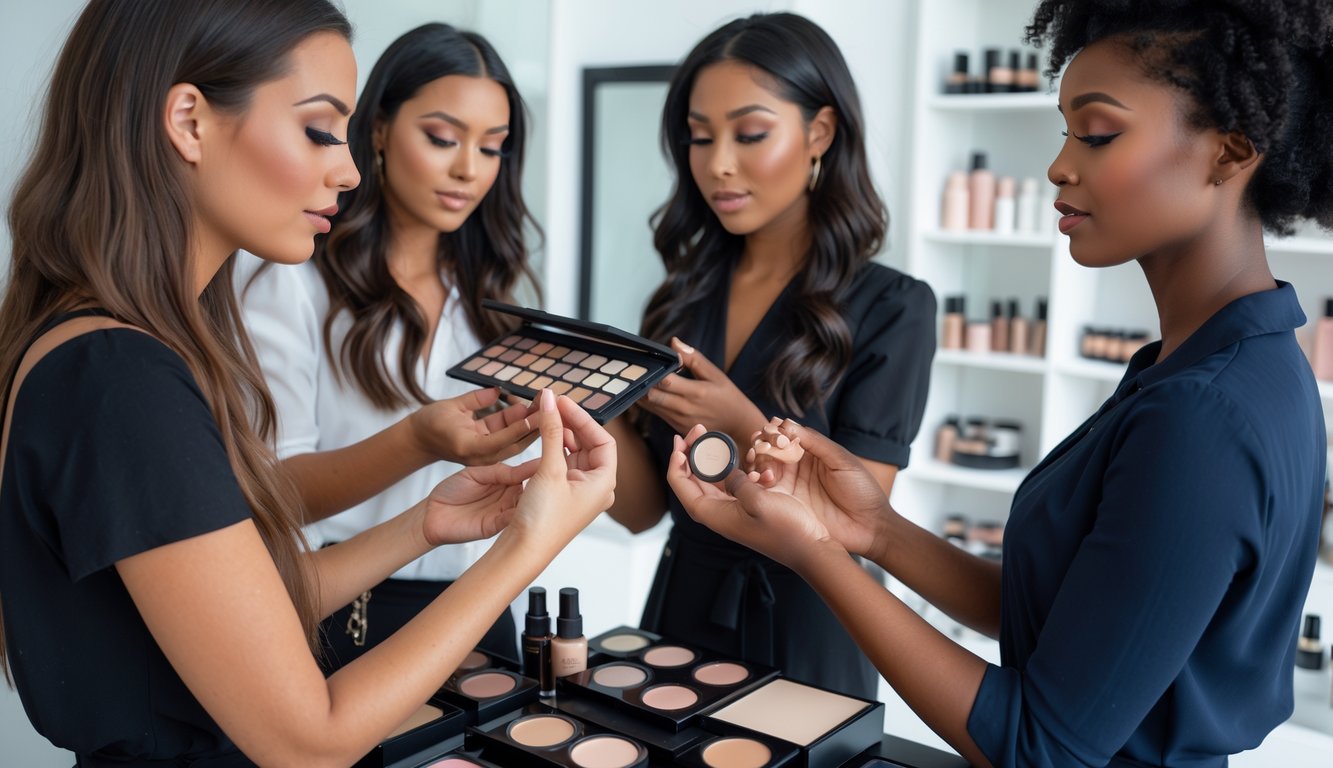Foundation Shade Swaps Makeup Artists Secretly Rely on for Natural Results
ColourPop and Cover FX: Budget-Friendly Gems
Look, nobody expects a $15 ColourPop tube to save the day, but I’ve watched the Pretty Fresh Tinted Moisturizer do exactly that after a fancy French bottle exploded in my kit. Perfect? Not even close. It’s sheer, but somehow adapts, especially if your skin’s already behaving (lucky you).
Cover FX is my go-to when someone’s about to grill me about gluten or animal stuff, or they start reading ingredient lists out loud. Power Play Foundation? Those custom drops? Water-based, blendable, no fragrance. If I’m under those nasty studio lights, it doesn’t melt or flash weird. Dermatologists actually recommend it, which is rare—Mayo Clinic says fragrance-free is less likely to freak out your skin, so, yeah, I trust it. The anti-flashback thing isn’t just a tagline—photographers have receipts.
Cheap means I can buy more shades and not cry if one goes missing. Downside: broke a compact in half during a demo, so, uh, don’t expect indestructible packaging.
Chanel: Iconic Formulas for Flawless Skin
I used to think Chanel was just for showing off bottles on Instagram, but then Les Beiges Healthy Glow Foundation somehow became a staple for shoots where I need that “I woke up like this” finish. Built-in soft focus, no filter needed. Dermatologists warn not every luxury brand is skin-friendly, and honestly, they’re right.
Chanel doesn’t always nail undertones for deeper skin—I mean, they try, but it’s not perfect. Still, the texture and finish? Vitalumière Aqua is basically “real skin but better.” One NYC artist (alphabetizes everything, it’s terrifying) swears the SPF formulas don’t pill under powder, which sounds minor until you’re ten hours deep and still on camera.
Downside: the fragrance is sometimes a disaster—rescued a bride once when her skin went pink. Always have a backup, lesson learned.
Achieving Natural Results With Tinted Moisturizers and Concealers
Why does everyone else’s skin look like actual skin in photos? I keep losing time spiraling about it. My only real answer: tinted moisturizer and concealer. If the base looks fake, game over. But the second I swap formulas or move my brush, suddenly my skin chills out—well, sometimes. Nobody tells you about pilling or those gross sweat lines.
When to Swap Foundation for Tinted Moisturizer
Foundation sitting on dry patches, highlighting pores—ugh, hate it. Makeup artists I trust (I’ve seen Charlotte Tilbury do this, not kidding) say tinted moisturizer isn’t just for lazy days. It blends away the obvious edges, especially when your skin’s having a meltdown or you just got off a flight.
Dermatologists on those endless panels always say non-comedogenic stuff (bareMinerals Complexion Rescue, for example) won’t clog you up. On set, I just want sheer coverage that hides redness but leaves freckles alone. Clients take “no makeup” selfies right after, which is a win. Sweat? SPF and hydration help, but brands act like it’s a miracle cure. It’s not. Sometimes two paper-thin layers with a damp sponge look more real than any full-coverage foundation, which sounds fake but isn’t.
Why are people still pushing heavy bases? Even runway models walk out in tinted moisturizer and powder, barely there. Family photos? Everyone looks better when you can see skin.
Utilizing Concealer for Targeted Coverage
Nothing wastes time like slapping concealer under your eyes when you just wanted to cover a zit. I watched someone backstage dab NARS Radiant Creamy in a bullseye on a blemish—just dab, let it sit, dab again. Worked better than my usual panic smearing.
Under-eye shadows or nose redness? Tinted moisturizer first, then tiny dots of concealer. Skip the reverse-triangle thing from YouTube, it’s not real life. Charts comparing formulas? Lies. The shade should match your skin, not be lighter—nobody wants white circles in flash photos.
Most pros mix two tones (peach for circles, neutral for redness) and use a tiny brush, but, honestly, sometimes I just use my finger. Layer on a dewy base, never too much powder after. Last week, someone set everything with a tissue—old-school, but looked fresh hours later. Maybe we should bring that back. Sometimes less is more—sheer skin, spot concealing, and nobody can tell.
Adapting Your Foundation Shade to Seasons and Skin Changes

Every summer, my foundation shade just… mutates. All those careful winter matches? Useless. My drawer does not expand with the seasons, so stop pretending. SPF, sweat, oxidation—suddenly I’m orange. Winter? I turn chalky. Or is it ghostly? Whatever, it’s not cute.
Adjusting Shade for Summer and Winter
Nobody swaps their whole kit for the seasons. I keep two, sometimes three shades—winter, summer, and a wild card. Mix as needed. Color theory basics: yellow kills pink, bronzer fixes dullness. Sometimes I just blend bronzer into my too-pale foundation and call it a day.
Sun in July? Matching my forehead and jaw is a joke, so I grab MAC Face & Body or thin out anything too heavy. If my “summer” shade is still off, I set with a lighter powder instead of buying another bottle. Blending past the jaw? Yes, and down to my collarbone because I refuse to have that weird mask line.
How Sun Exposure Impacts Your Match
Why do I turn two shades darker by August, even with SPF 30? Dermatologist says it’s enough, but who remembers to reapply every two hours? Even a lunch break in the sun shifts my match. Undertones get weird—tan turns gold into peach or even red. Never matches my chest.
Self-tanner? Nightmare. My hands and face are never the same color. Fashion week artists say to keep a green-tinted primer handy for post-sun redness, especially if your nose betrays you. Sometimes I just dump a drop of yellow mixer into my foundation to fix undertone shifts. No magic, just awkward reality.



